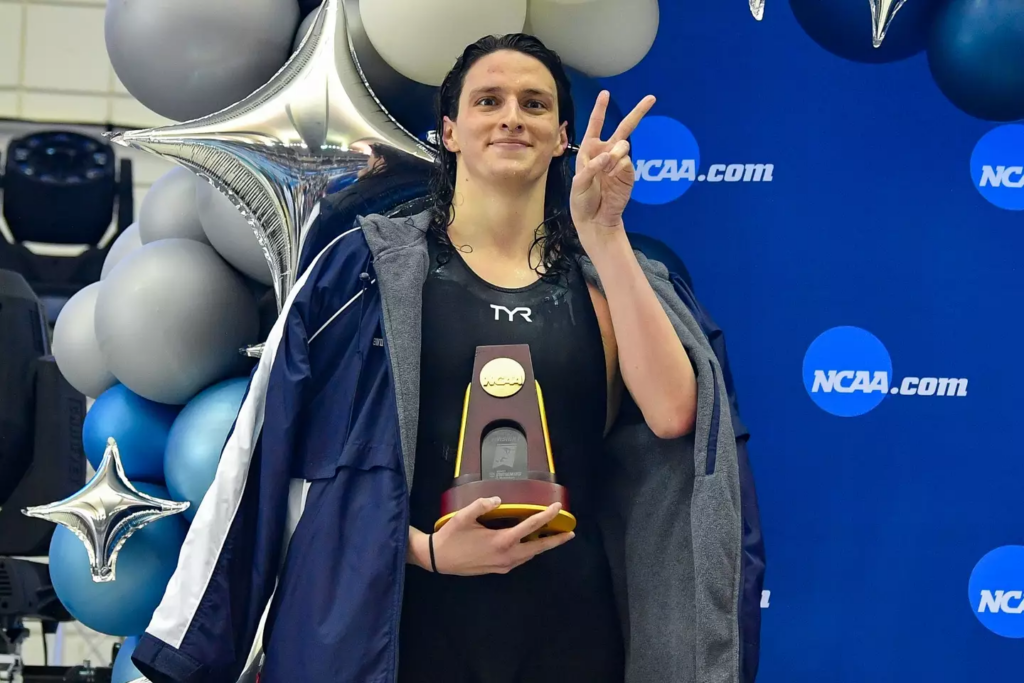Trans Swimmer Lia Thomas Will Not Compete in Olympics After Losing Legal Battle
This post may contain affiliate links. As an Amazon Associate, I earn from qualifying purchases. Read my disclosure policy here.
Lia Thomas has been making waves in the world of competitive swimming, not just for her remarkable achievements in the pool, but for her role in a heated debate that’s shaking up the sports world. As the first openly transgender athlete to win an NCAA Division I national championship, Lia’s journey is both inspiring and controversial. Recently, her quest to compete in the Olympics took an unexpected turn due to a significant legal ruling.
What led to this groundbreaking decision? How does it impact the future of transgender athletes in sports? In this article, we’ll explore Lia Thomas’s story, the challenges she’s faced, and the broader implications of this landmark case. Get ready to dive into a narrative that’s about much more than swimming – it’s about identity, fairness, and the fight for inclusivity in athletics.

The Intriguing Case of Lia Thomas
Lia Thomas, a 25-year-old American swimmer, made history as the first openly transgender athlete to win an NCAA Division I national championship by claiming victory in the women’s 500-yard freestyle event in 2022. Her success was a milestone for transgender representation in sports, but it also sparked significant debate and scrutiny. The controversy intensified when World Aquatics introduced a new rule barring individuals who had undergone male puberty from competing in women’s races, directly impacting Thomas.
Thomas began hormone replacement therapy in 2019, which marked a significant step in her transition. Despite her compliance with the NCAA’s guidelines at the time, her victories led to a reevaluation of eligibility rules by World Aquatics. The new regulations stipulated that transgender women could only compete in women’s categories if they could prove they had not experienced male puberty beyond Tanner Stage 2 or before the age of 12. This rule effectively disqualified Thomas from participating in future women’s competitions, including the Olympics.
In response to the rule change, Thomas launched a legal case with the Court of Arbitration for Sport, arguing that the new regulations were discriminatory and unlawful. She contended that the rule unfairly singled out transgender athletes and deprived them of the opportunity to compete at the highest levels of sport. However, a panel of three judges dismissed her request for arbitration, stating that Thomas lacked standing because she was not a member of USA Swimming, a requirement for challenging the eligibility criteria for World Aquatics competitions.
This decision was a significant blow to Thomas and other transgender athletes hoping to compete on the world stage. Despite the setback, Thomas remains a prominent figure in the ongoing discussion about transgender rights in sports, highlighting the need for policies that balance fairness with inclusivity.
Understanding the World Aquatics Rule Change
World Aquatics’ rule change, introduced after Lia Thomas’s historic NCAA win, has been a focal point of debate and controversy. The new regulation, detailed in section 5.5 of the World Aquatics Competition Regulations, specifies the eligibility criteria for transgender women athletes in women’s competitions.
According to section 5.5.2, transgender women are allowed to compete in World Aquatics competitions only if they can demonstrate that they did not experience male puberty beyond Tanner Stage 2 or before the age of 12, whichever is later. This condition requires athletes to provide evidence of either complete androgen insensitivity, which prevents male puberty, or that they began hormone therapy to suppress male puberty at Tanner Stage 2 or before age 12 and have maintained their testosterone levels below 2.5 nmol/L consistently.
The rationale behind this rule is rooted in concerns about competitive fairness. Proponents argue that male puberty can confer physical advantages, such as increased muscle mass and strength, which could create an uneven playing field in women’s sports. By implementing these stringent criteria, World Aquatics aims to ensure that female athletes compete on a level playing field.
However, critics of the rule argue that it unfairly discriminates against transgender athletes and imposes unrealistic and invasive requirements. They contend that the rule ignores the complexity of gender identity and the significant social and psychological challenges transgender athletes face. Moreover, opponents believe that the rule sets a dangerous precedent for other sports organizations, potentially leading to broader exclusion of transgender individuals from competitive sports.
The controversy surrounding World Aquatics’ rule change underscores the ongoing struggle to balance fairness and inclusivity in sports. It raises critical questions about how best to accommodate transgender athletes while maintaining the integrity of competitive sports, a challenge that continues to evolve as society grapples with issues of gender and equality.

The Impact on Transgender Athletes
The rule change by World Aquatics has significant implications for transgender athletes, affecting not only their ability to compete but also their broader acceptance and inclusion in sports. For Lia Thomas, the decision means she cannot participate in the Olympics or other World Aquatics competitions, despite her previous achievements and compliance with the NCAA’s regulations.
Individual Impacts on Athletes
This ruling underscores the challenges transgender athletes face in gaining recognition and opportunities in their respective sports. The new eligibility criteria effectively disqualify many transgender women who have undergone male puberty, regardless of their current hormone levels or physical capabilities. This exclusion can have far-reaching consequences on their athletic careers, limiting their ability to compete at elite levels and potentially diminishing their visibility and role in promoting transgender inclusivity in sports.
Broader Implications for Sports Organizations
The impact extends beyond individual athletes like Thomas. The rule sets a precedent that may influence other sports organizations to adopt similar policies, potentially leading to widespread exclusion of transgender athletes from various competitive platforms. This can create a chilling effect, discouraging transgender individuals from pursuing sports due to the fear of discrimination and rejection.





